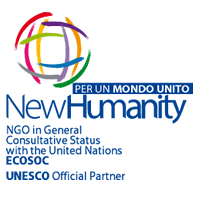Living Peace International
The Living Peace International Project is a path to peace education.
It is based on the “Dice of Peace” ![]() on whose faces there are no numbers but sentences that help build peaceful relationships among everybody. It is inspired by the main points of “The Art of Love”, that Chiara Lubich proposed many years ago to the children of the Focolare Movement using a dice game.
on whose faces there are no numbers but sentences that help build peaceful relationships among everybody. It is inspired by the main points of “The Art of Love”, that Chiara Lubich proposed many years ago to the children of the Focolare Movement using a dice game.
Together with the dice she also proposed the![]() “Time out”: at noon every day we have a moment of silence, reflection, or prayer for peace.
“Time out”: at noon every day we have a moment of silence, reflection, or prayer for peace.
As of today, there are more than 1,700 schools and groups that adhere to this project and more than 1 million children, young people and adults involved in these initiatives in the five continents.
The project aims to strengthen the collaboration and to cooperate with many people in the world to build a “net” of peace that wraps the Earth. As a consequence, Living Peace is also a platform: there are more than 80 international organisations that operate in synergy with this project and share peace initiatives proposed by the respective nets.

Goal
Living Peace International aims at improving everyone’s commitment to live in peace and for peace in every context, including education.
Specific Goals
- Develop affective pedagogical practices we can export to different places and contexts
- Improve active citizenship and democracy through intercultural and peace education
- Increase awareness of people’s rights and duties
- Develop respect for each other's differences and intercultural dialog
- Improve teamwork and our abilities to plan and act together
- Foster creativity and improve learning abilities
- Improve relationships among teachers and students, and motivate individuals to engage in prosocial behaviour
Beneficiaries
The main beneficiaries of our project are schools and youth groups, but other entities may benefit from it, such as parishes, art groups, charities, and others, regardless of their location, culture and religion.
6x1 Methodology
6x1- Six steps towards a goal: a proposal from the Teens for Unity movement that stems from Service Learning methodologies and aims to help youth groups to plan effective and inclusive peace actions.
The 6x1 Methodology enhances our ability to look at our own social context and actively improve it in six steps: observe, think, involve, act, appreciate, and celebrate.








